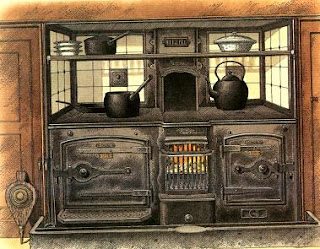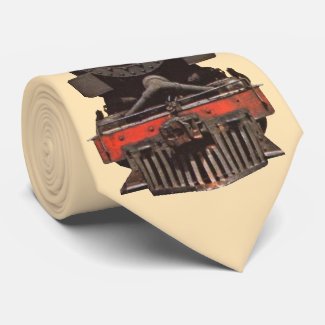Roast Turkey
Actually, the pioneers who settled our village would not be thinking of the American turkey as a strange or exotic creature to be eating. The bird was imported into Europe as early as the 16th century by merchant explorers by way of seaports in Turkey (the country) and became known as "the bird from Turkey", or simply, a turkey. The name stuck even after a proper Latin name was assigned to it. I think most folks would agree that "roast turkey" sounds better than "roast meleagris gallopa" or "roast bloeu" as our neighbors, the Lenape, would have called it. So "turkey" it is !
Since the Village of Second River has been around longer than all but a short-list of other old world settlements in this part of the new world, so it is that we and our civic ancestors have seen the entire evolution of turkey preparation from the hearth to the gas stove.


Open Grate circa 1790 - 1850
Around 1790, just after the Revolutionary War, a revolutionary new kitchen stove was invented. It was imported from England, curiously, with whom we had just been at war. But, while war may be war, business is business and these popular stoves were imported in considerable numbers by the younger "modern" housewives. It was the open grate stove, a cast iron affair with an exposed fire. Although it had an oven chamber, in front of the open grate the turkey could still be roasted on a rotating spit. This stove could be fueled by either wood or coal. Coal was just becoming available from mines recently discovered in nearby Pennsylvania. This would be the last kitchen stove on which a turkey could be "roasted". Today, although we call it roast turkey, we actually bake them in the oven.

Closed Grate circa 1850-1890
In the middle of the nineteenth century, the open grate stove was being replaced by the closed grate stove which featured an enclosed fire over which cooking plates were arranged. There was an oven on one side of the fire chamber and a hot water tank on the opposite side. The turkey could no longer be roasted before the fire, it had to be baked in the oven. The closed grate stove was similar to and a step toward the familiar kitchen coal stove.
Coal Stove circa 1890-1940
Did I say familiar ? Well, just ask your grandmother about it. She will tell you all about the task of firing up and baking a turkey in one of those. If the reader is old enough, the reader may have actually used a coal stove. Your author-here-present is quite familiar with them. It really wasn't that long ago when most folks switched to the modern gas stove.
It was not easy to convince the older generation to switch to the labor-saving gas unit. Aside from the fact that the manner of cooking is entirely different and older folks were not anxious to learn a new way, the fact is that the gas stove was down-right scary. Even though the gas stove had been available since the beginning of the twentieth century, there was no rush to buy them. From grandmother's earliest days as an apprentice cook, she would have been taught that a red/orange fire was the right fire for cooking and that a blue fire was the dangerous burning-off of toxic gasses which would be carefully marshaled up the chimney. No cooking would begin 'til the fire turned red. Can you imagine the gasp that would come from grandmother when the appliance salesman turned the knob on a gas stove and a blue flame appeared ? "My God, you are trying to kill us all ! I'll have none of those in my kitchen !"
Gas Stove circa 1920-1940
Those of you who are going to bake your holiday turkey in the oven of a modern gas range can thank your mothers from the 1950 era for the convenience of it. It was the post WWII housewife, with her love of labor-saving devices, that openly accepted the gas stove with it's god-awful blue flame and was quite glad to see the old coal stove gone.
Gas Stove 2008
But, what now ? What comes next ? Did someone say microwave ? I hope not. There would be something unholy about nuking a holiday turkey !
==>
Peek in at the new release at the book store. It's explains how your grandmother was taught to cook back when she was a little girl. It's a fun read and it makes a great gift !

































